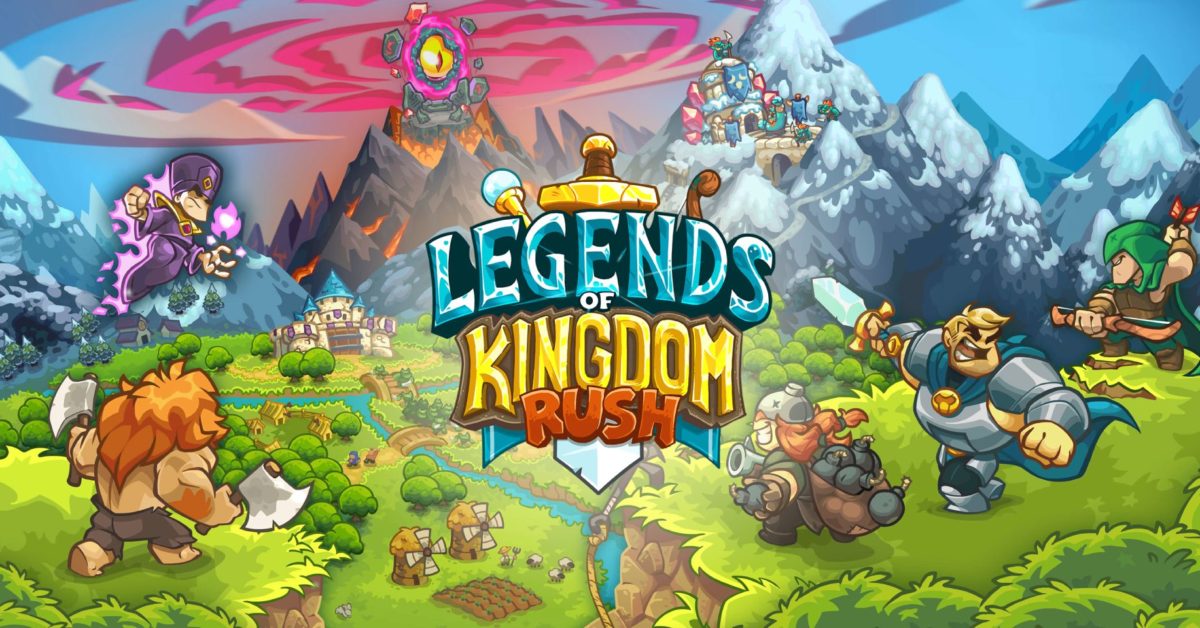
The novel describes the flood of humanity out into the galaxy and the race for the newly accessible resources therein.
Kingdom rush legends series#
Cibola Burn is the fourth book in the science fiction novel series The Expanse by James S.Romance author Kristin Hannah's The Enchantment (1992) is about a quest for the legendary lost city of Cibola in the late 1800s.Edward Abbey's autobiographical recount of his summer as a park ranger at Arches National Park, Desert Solitaire, contains a reference to "seven modern cities of Cibola" including Phoenix, Tucson, Albuquerque, and Flagstaff.In The Stand by Stephen King, Trashcan Man is instructed by Randall Flagg to meet him in Cibola, which is later revealed to be Las Vegas.Michener references the site as a background to early Spanish exploration. The novel The King's Fifth by Scott O'Dell tells the story of one such (fictional) expedition through the eyes of a teenage cartographer.The Pueblo Indians, including the Zuñi, are still well known for their turquoise and silver work. The Spanish soon discovered rich copper and turquoise mines in the Pueblo country which made the region famous for its mineral wealth even in recent times. The historic Cíbola on the other hand is recorded in Spanish sources as another name for the Zuñi pueblo and the surrounding country. However, when at last he reached this place (variously conjectured to be in modern Kansas, Nebraska, or Missouri), he found little more than straw-thatched villages. While among the towns, Coronado heard an additional rumor from a native he called "the Turk": that there was a city with plenty of gold called Quivira, located on the other side of the Great Plains. However, when conquistador Francisco Vázquez de Coronado finally arrived at Cíbola in 1540, he discovered that the stories were unfounded and that there were, in fact, no treasures as the friar had described - only adobe towns. In 1539, Italian Franciscan Marco da Nizza reached Zuni Pueblo and called it Cibola. Eventually returning to New Spain, the adventurers said they had heard stories from natives about cities with great and limitless riches. The later Spanish tales were largely caused by reports given by the four shipwrecked survivors of the failed Narváez expedition, which included explorers Álvar Núñez Cabeza de Vaca and his slave Estevanico. The stories may have their root in an earlier Portuguese legend about seven cities founded on the island of Antillia by a Catholic expedition in the 8th century, or one based on the capture of Mérida, Spain, by the Moors in 1150. In the 16th century, the Spaniards in New Spain (now Mexico) began to hear rumors of "Seven Cities of Gold" called "Cíbola" located across the desert, hundreds of miles to the north.

īesides "Cíbola", names associated with similar lost cities of gold also included El Dorado, Paititi, City of the Caesars, Lake Parime at Manoa, Antilia, and Quivira. According to legend, the seven cities of gold referred to Aztec mythology revolving around the Pueblos of the Spanish Nuevo México, today's New Mexico and Southwestern United States.

The myth of the Seven Cities of Gold, also known as the Seven Cities of Cíbola ( / ˈ s iː b ə l ə/), was popular in the 16th century and later featured in several works of popular culture. JSTOR ( June 2018) ( Learn how and when to remove this template message).Unsourced material may be challenged and removed.įind sources: "Seven Cities of Gold" – news Please help improve this article by adding citations to reliable sources. This article needs additional citations for verification.


 0 kommentar(er)
0 kommentar(er)
